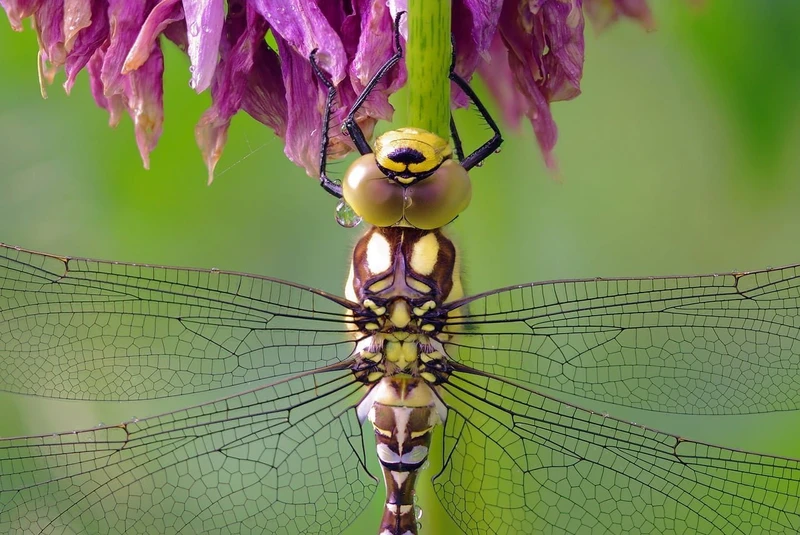Researchers from the American Weizmann School of Design have discovered that dragonfly wings could help develop lighter, stronger, and more “eco-friendly” airplane wings. Based on the principles of biomimicry (copying nature’s evolutionary strategies to solve human problems), PhD Masoud Akbarzadeh and his student Hao Zheng investigated how to design an innovative wing for the Boeing 777 inspired by insect wing design.
Technical inspiration from nature
As Mr. Akbarzade claims, nature is a great teacher that shows us how to optimize systems. The dragonfly has wings that have evolved over millions of years into an incredibly lightweight, efficient, and strong structure.
Intrigued by the shape and structure of this creature’s wings, researchers found that the veins provide strength and flexibility to the wings. This allows dragonflies to fly nimbly and quickly. Additionally, as Mr. Akbarzade notes, upon closer examination of the patterns on the insect’s wings, it became evident that they contain many convex polygons.

The researcher adds that the convex wing network is very similar to the efficient networks they develop using the method of graphic statics and study in the laboratory. Therefore, he and his colleagues became interested in whether existing geometry-based analysis tools could be used to analyze these patterns and reproduce them under different conditions for other types of wings.
The evolution of insects inspires innovative technical solutions.
The research was based on the application of artificial intelligence The internal structure of the aircraft wing was based on a two-dimensional skeleton of a dragonfly wing.
It turned out that there is a correlation between the thickness of the connected components or elements and the equilibrium of this network in the plane. Simply put, it’s like taking a dragonfly’s vascular network, pulling it from all sides, and discovering that the overall structure functions perfectly as an extended network, at least in a 2D plane.
According to Mr. Akbarzade, it was a stunning discovery. Because the wing is designed for bending behavior associated with flapping motions, rather than just for tension or compression.
Researchers studied the behavior of wing structures by simulating their structural patterns. As Mr. Akbarzade notes, they ultimately demonstrated that this approach could lead to more efficient wing structures against out-of-plane bending.
From the dragonfly’s wing to the wing Boeing
The team of researchers applied their findings in practical situations. The scientists integrated their own projects, inspired by dragonflies, into a 2D extruded wing plan for a Boeing 777 at a scale of 1:120. The team observed a significant increase in the efficiency of the wing design.

Numerous tests indicate that the model, designed based on the structure of a dragonfly’s wing, improved out-of-plane stiffness by 25%. This result suggests the potential for developing lighter and more efficient variations of aircraft wings.
As noted by the publication Interestingengineering Mr. Akbarzade’s team intends to delve deeper into the 3D configuration of a dragonfly’s wing to find additional design insights. ideas Moreover, researchers expect to improve their machine learning algorithm by enhancing its predictive capabilities and the accuracy of artificial structure replication.
